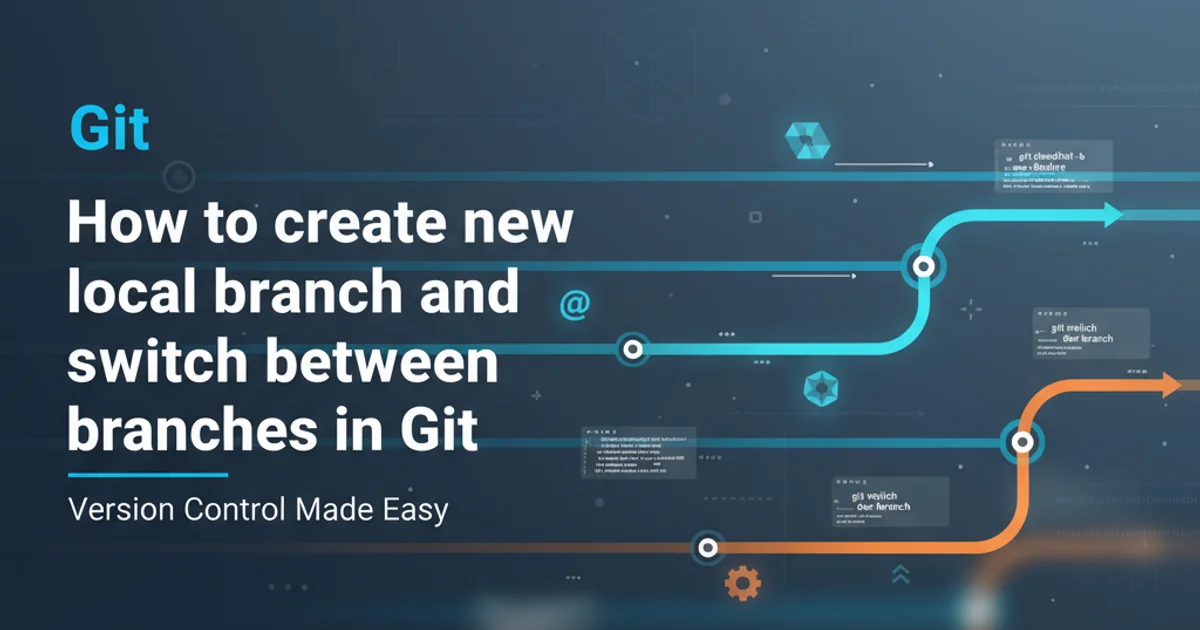How to create new local branch and switch between branches in Git
Categories:
Mastering Git Branches: Create, Switch, and Manage Your Workflow

Learn the essential Git commands to create new local branches, switch between them, and understand how branches facilitate parallel development in your projects.
Git branches are fundamental to modern software development, enabling developers to work on different features or bug fixes concurrently without affecting the main codebase. This article will guide you through the process of creating new local branches and efficiently switching between them, a core skill for any Git user.
Understanding Git Branches
In Git, a branch is essentially a lightweight movable pointer to one of your commits. When you create a new branch, you're creating a new pointer. The master (or main) branch is the default branch in a Git repository. All your development work typically starts from this branch, and new features or fixes are developed on separate branches before being merged back into the main line of development.
flowchart TD
A[Start on main/master] --> B{Create new branch 'feature-x'}
B --> C[Work on feature-x]
C --> D{Switch back to main/master}
D --> E[Work on main/master]
E --> F{Switch to another branch 'bugfix-y'}
F --> G[Work on bugfix-y]
G --> H{Merge branches}
H --> I[End]Basic Git Branching Workflow
Creating a New Local Branch
To start working on a new feature or bug fix, it's best practice to create a new branch. This isolates your changes from the main codebase until they are ready. The git branch command is used for creating, listing, and deleting branches.
git branch <branch-name>
Command to create a new branch
For example, to create a branch named feature/add-user-profile:
git branch feature/add-user-profile
Creating a new branch named 'feature/add-user-profile'
feature/, bugfix/, hotfix/, or release/ followed by a descriptive name.Switching Between Branches
After creating a branch, you need to switch to it to start making changes. The git checkout command is traditionally used for this purpose. However, Git 2.23 introduced git switch as a more intuitive and safer alternative specifically for switching branches.
Using git checkout:
git checkout <branch-name>
Command to switch to an existing branch using 'checkout'
For instance, to switch to the feature/add-user-profile branch:
git checkout feature/add-user-profile
Switching to 'feature/add-user-profile' using 'checkout'
Using git switch (recommended for newer Git versions):
git switch <branch-name>
Command to switch to an existing branch using 'switch'
To switch to feature/add-user-profile with git switch:
git switch feature/add-user-profile
Switching to 'feature/add-user-profile' using 'switch'
git switch command is designed to separate the concerns of switching branches from restoring files, making it less error-prone than git checkout for branch operations.Creating and Switching in One Command
Git provides a convenient shortcut to create a new branch and immediately switch to it. This is often the most common workflow when starting a new task.
Using git checkout -b:
git checkout -b <new-branch-name>
Command to create and switch to a new branch using 'checkout'
Example:
git checkout -b bugfix/login-issue
Creating and switching to 'bugfix/login-issue'
Using git switch -c (recommended for newer Git versions):
git switch -c <new-branch-name>
Command to create and switch to a new branch using 'switch'
Example:
git switch -c bugfix/login-issue
Creating and switching to 'bugfix/login-issue' using 'switch'
Listing Branches
To see all local branches in your repository and identify which one you are currently on, use the git branch command without any arguments.
git branch
Listing all local branches
The output will show a list of branches, with an asterisk * indicating the currently active branch.
bugfix/login-issue
* feature/add-user-profile
main
Example output of 'git branch'
This output indicates that you are currently on the feature/add-user-profile branch.